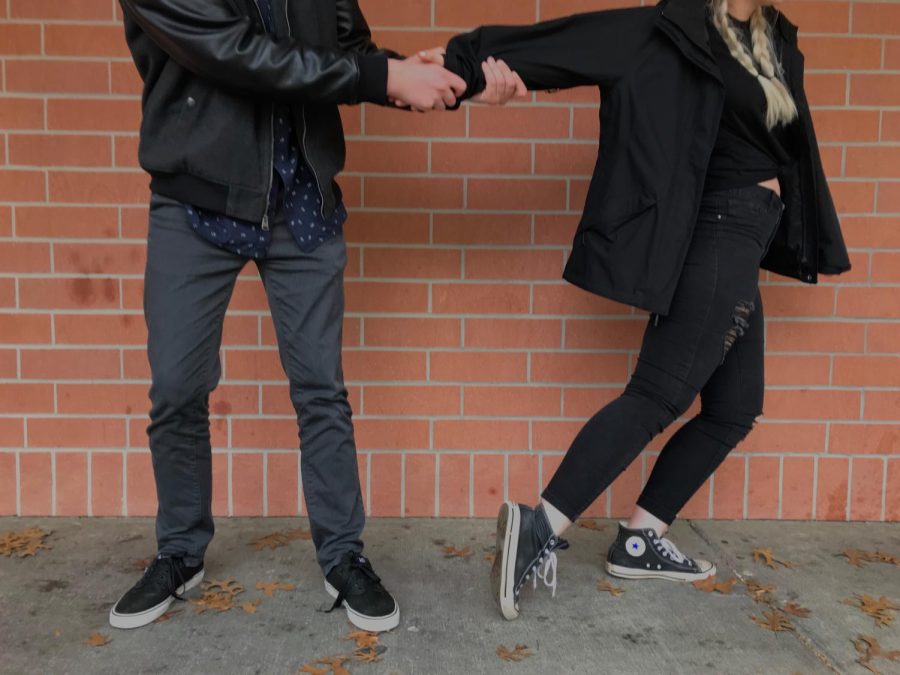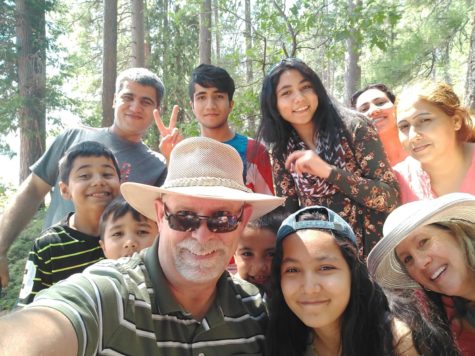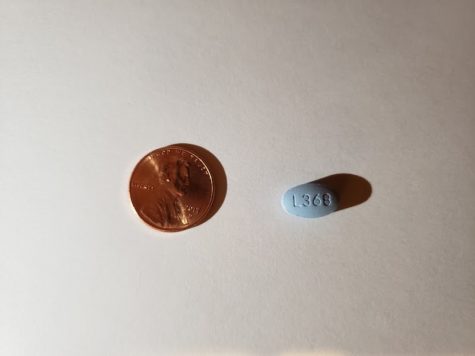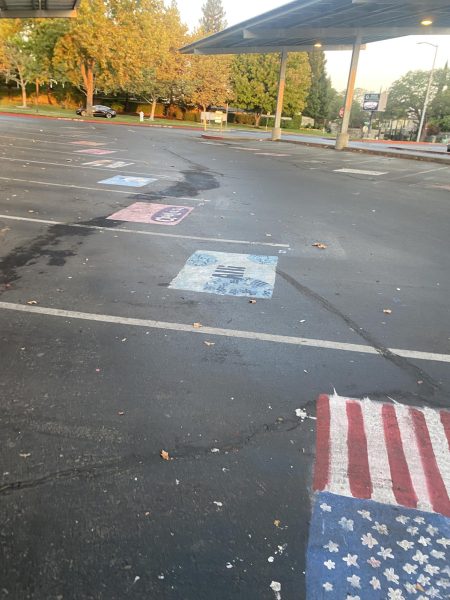Victims of harassment share their traumatic stories
Granite Bay High students share their peer-to-peer experiences
According to the National Sexual Violence Resource Center, one in four girls and one in six boys will be sexually abused before they turn 18 years old.
Editor’s note: This is the second in a series of Gazette stories about sexual harassment.
***
High school is challenging enough as is – but imagine having to deal with all of its natural stressors in addition to coping with the atrocious memories of your harassment or assault or rape. You can’t – not unless you’ve been there.
Olivia, a pseudonym for a former Granite Bay High female student, mistook what was supposed to be a “fun Fourth of July summer trip” for what would turn out to be a lifelong nightmare – and a memory she couldn’t erase.
“A lot of different stuff led up to him actually sexually assaulting me,” Olivia said. “He groped my breasts, pulled me on his lap, kept fixing my bathing suit and (gave) me a ton of red flags.”
Things escalated, and the experience proved to be so scarring that it would eventually make its way to the criminal court.
But Olivia’s case was only one of many.
According to the National Sexual Violence Resource Center, one in four girls and one in six boys will be sexually abused before they turn 18 years old.
In a series of Twitter polls conducted by the Gazette, 37 percent of students responded “yes” when asked if they’d ever been a target of unwanted, sexual remarks made by other students on campus. Twenty-two percent responded “yes” when asked if they’d ever felt physically violated by another student on campus; 44 percent responded “yes” when asked if they’d ever been made to feel uncomfortable by another student on campus.
Students endure harassment every day – not all cases are necessarily egregious, but all cases certainly deserve attention.
Discussing sexual harassment and/or assault in a public arena almost guarantees at least one person will claim the issue is political. But sexual harassment and rape isn’t political – it’s real, and it’s happening on campus and in the community.
At a party
Perhaps the most notorious setting for sexual harassment and assault is the party scene.
Rachel, a pseudonym for a GBHS senior girl, was leaving a party the same way she always did – by hugging her friends goodbye. However, this time, a friend of hers perceived the gesture as a sexual invitation.
“After I left the party later that night, I get a text from the same guy asking if I wanted to come over,” she said. “This guy has a girlfriend, who also happens to be one of my good friends, so I politely declined and asked him why he would ever ask me that. He then replied, ‘Well the way you hugged me at the party seemed pretty sexual and inviting. It was like you slid your hand down my back. I’ve always liked you and wanted to hook up with you maybe tonight.’
“At this point, I was furious and went off on him, condemning everything he just said. Yet, even though I made it blatantly clear I would never want to come over, let alone do anything (sexual), he kept insisting I was the one that made a move on him and was in the wrong for implying that.”
Unfortunately, a significant part of rape culture is victim-blaming: the act of criticizing a victim’s role in a crime or violating encounter and, essentially, taking the perpetrator’s side.
“Eventually, after great volumes of argument, he apologized for making me upset, although he never admitted he did anything wrong,” Rachel said. “It still makes me mad looking back on it – I really can’t believe how some people register or over analyze things.”
In a pool
Emma, a pseudonym for a GBHS female student who also asked that her grade in school not be revealed, wound up in an uncomfortable situation at a friend’s house where she was intoxicated.
“It was sophomore year,” Emma said. “Not very many people were left, and we went skinny dipping. Everyone had been drinking all night – including myself. After we were out there for a while, I didn’t really notice (at first), but next thing I knew I was out there by myself with one other guy. We were both in the pool and, all of a sudden, he was pulling me on my back over to the side of the pool to a ledge, and immediately I knew I was in a bad situation.”
Even with clear signs of disinterest, the perpetrator continued.
“He started trying to kiss me and tell me how pretty I was, and I kept turning my head, but then he pulled me on top of him and was trying to take off my bra. In that moment, I snapped out of it and pushed myself off of him and hurried inside,” Emma said.
Emma said, even though she was under the influence, she knows her primary desire was obvious – that she wanted him to stop.
“I really want to stress that I was not complacent at all – I was very out of it because I was drinking. And I wouldn’t say I was fighting back, but I was absolutely turning my head and trying to get away. He would not stop until I literally pulled his hands off of me and pushed myself off of him. It’s possible he thought it wasn’t harassing behavior, but there is no way he thought I actually wanted any part of it – he just wanted to see how hard he could push it.”
Because of her own experiences, Emma said she knows the importance of remaining aware of one’s surroundings and taking precautionary measures, but she also knows that safety is never 100 percent ensured in any given circumstance.
“Now looking back, it still makes me feel uneasy, but ultimately I think I’m just thankful that I was still coherent enough to get myself out of the situation. I think it’s a good lesson for girls – but really everyone – on why it’s impossible to be proactive in protecting yourself.”
In a relationship
Abigail, a pseudonym for a GBHS senior, was first under the impression that she couldn’t be a sexual harassment or assault victim by her significant other. With time, she grew wary of the red flags, and, eventually, realized the severity of the situation.
“My sophomore year, I was first very good friends with, and eventually dating, a boy who on multiple occasions sexually harassed me and sexually assaulted me,” Abigail said. “Our entire relationship was unhealthy, toxic, emotionally abusive and, at times, not consensual. We started out as friends casually talking, began to hang out more, and become closer.
“(It) eventually led to us being a ‘thing’ and then officially dating. When we were ‘just friends,’ he would continually send me messages that made me uncomfortable. He sent me inappropriate pictures without asking me if I wanted them. He would pressure me to send him pictures, and I would continuously say ‘no’ and change the subject.
“This went on for months, and I convinced myself that it was normal or because we were friends or dating that it was OK. I kept saying ‘no’ to things like sending (explicit) pictures, and he kept demanding them. Every time I would reject him, he’d get mad, insult me or threaten me, and then hours later say he was kidding and he loved me.”
Throughout the relationship, Abigail excused his behavior, thinking it was standard to be treated the way she was being treated in an intimate relationship.
“I didn’t realize at the time it was abusive or unhealthy – I just kept convincing myself it was normal or OK because I liked him,” she said. “Things escalated a few months into our relationship when he would continuously (make) sexual advances (after) I very obviously voiced my dissent. I told him no multiple times, saying it kindly, jokingly and then seriously when he didn’t stop. I tried everything I could think of to get out of situations with us being alone because I was afraid of what he would do.
“Multiple times in the relationship he sexually assaulted me. I thought that because we were dating it wasn’t assault. I considered it him being ‘mean’ or ‘not understanding’ or him not respecting my boundaries or him trying to pressure me.
“It was all of those things, but I know now that being in a relationship doesn’t stop someone from being able to sexually assault the other person. He continued when I said no multiple times. We ended up breaking up about four months into us dating because I refused to have sex with him.”
According to the National Coalition Against Domestic Violence, almost half of female (46.7 percent) and male (44.9 percent) victims of rape in the United States were raped by an acquaintance. Of these, 45.4 percent of female rape victims and 29 percent of male rape victims were raped by an intimate partner.
Assault victims have a higher risk of developing drug or alcohol addictions, mental and neurological disorders and chronic pain, among other health problems.
Abigail’s experience still triggers painful memories and emotions for her, and she suffers from post-traumatic stress disorder because of it – even though the assault happened more than two years ago.
Seeking justice
Olivia was in the criminal court for two weeks and described her time there as one of the hardest experiences of her life.
“I sat across from the monster who wrecked me and stole so much from me. I sat there as my integrity was questioned, was made out to be a liar, and was re-traumatized about the whole incident,” Olivia said.
But Olivia refused to let herself be a victim again, if she could help it.
“Although (my experience in court) was really awful, it made me realize how many amazing people I had around me helping me be strong,” she said. “Although the criminal court didn’t end up going in my favor, I still won. I spoke up and did everything I could. That monster still gets to walk around Roseville like nothing happened, but I know what he did and so does everyone else – and that’s all that matters.”
Even for the victims of the most tragic and terrifying events, there is hope – hope and a great deal of strength.
Olivia spoke about the impact of movements like “Me Too” and “Time’s Up.”
“Movements like ‘Me Too’ and ‘Time’s Up’ make me feel like I’m not alone,” Olivia said. “I’ve met so many incredible, strong people because of what I went through. People speaking up and bringing awareness to sexual assault and abuse is so important. Speaking up prevents more victims.”
Olivia came out of her experiences choosing to actively spread awareness of the realities of sexual assault and harassment through her story and through encouraging others to speak up.
“My advice to anyone going through being sexually assaulted is really simple but important, but it is to stay strong. People will doubt you, call you a liar, not stand up for you, but you have to stay true to yourself and know that you did absolutely nothing wrong. For me, (the rape) was about 2 ½ years ago and I still think about it almost every single day.
“Constantly I’m reminded of the horrific incident, but I also remember how strong it made me. It changed me as a person and made me who I am today. Also, it’s really important to tell someone if something has happened to you. Trying to forget what happened to you and avoiding dealing with the situation will only make it worse. Standing up also prevents the next person from being in your position.”
Perhaps the biggest takeaway advice from victims – there is a brighter day ahead, even for those who have endured the darkest.














Joel Levin • Mar 22, 2018 at 11:45 am
Thank you for this look into sexual harassment and sexual assault at Granite Bay HS.
The national nonprofit Stop Sexual Assault in Schools (ssais.org) has great resources, including a free student-led video “Sexual Harassment: Not in Our School!”